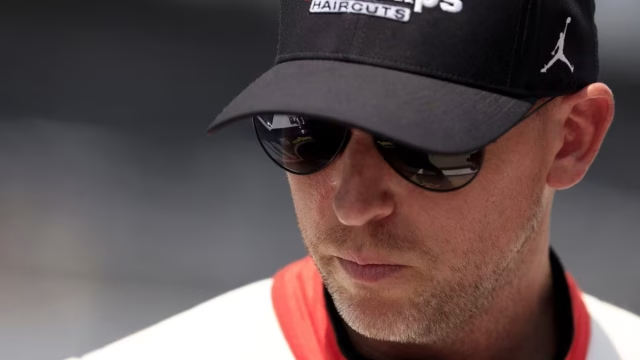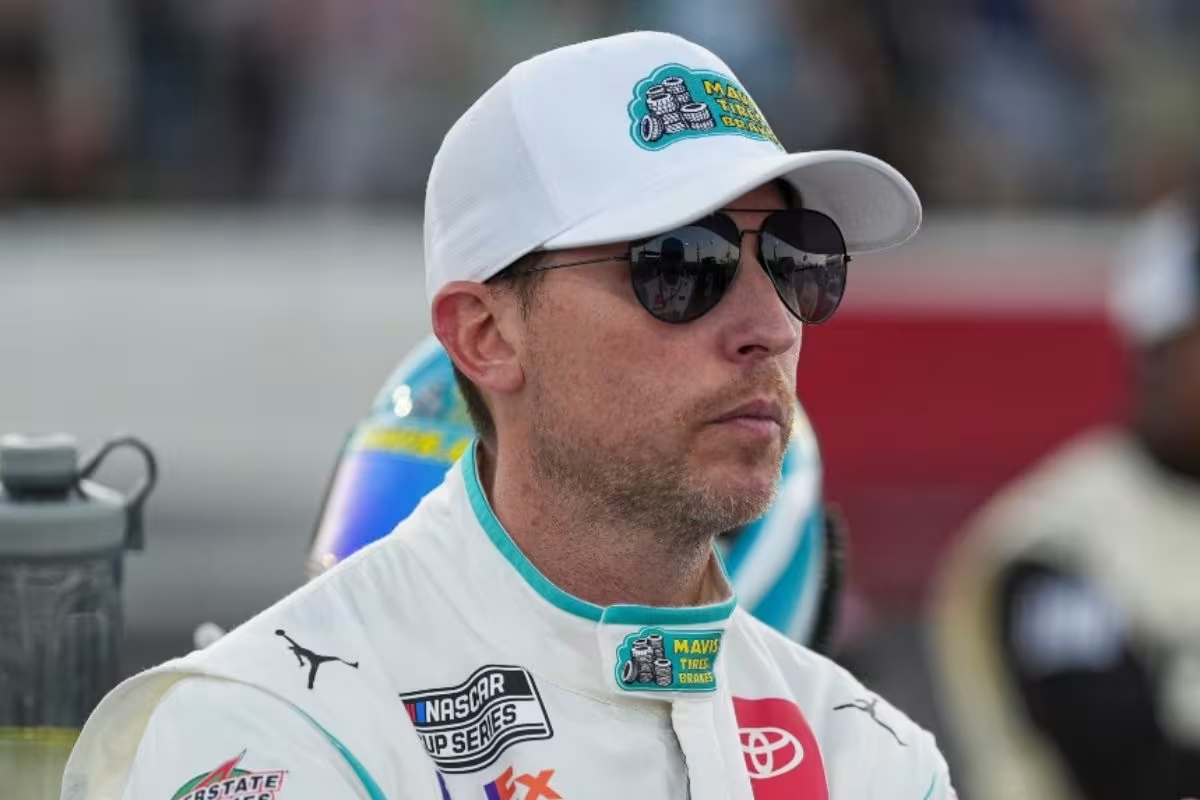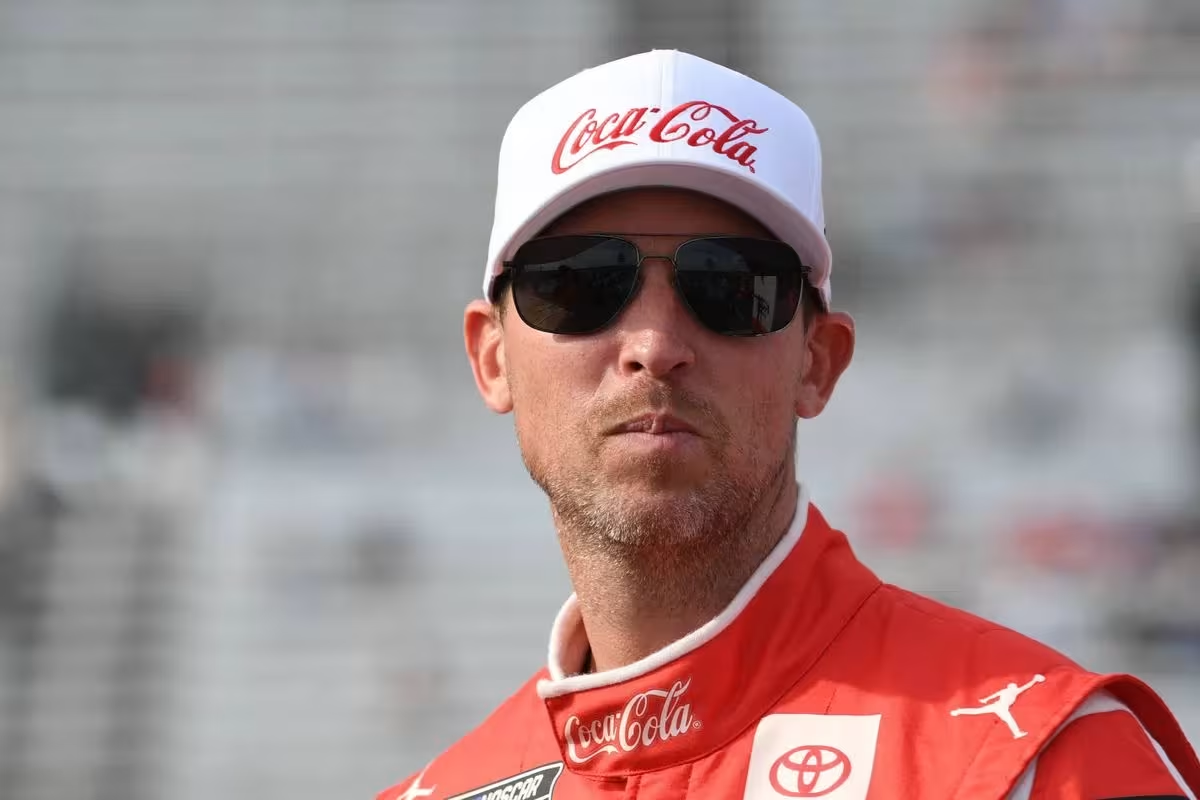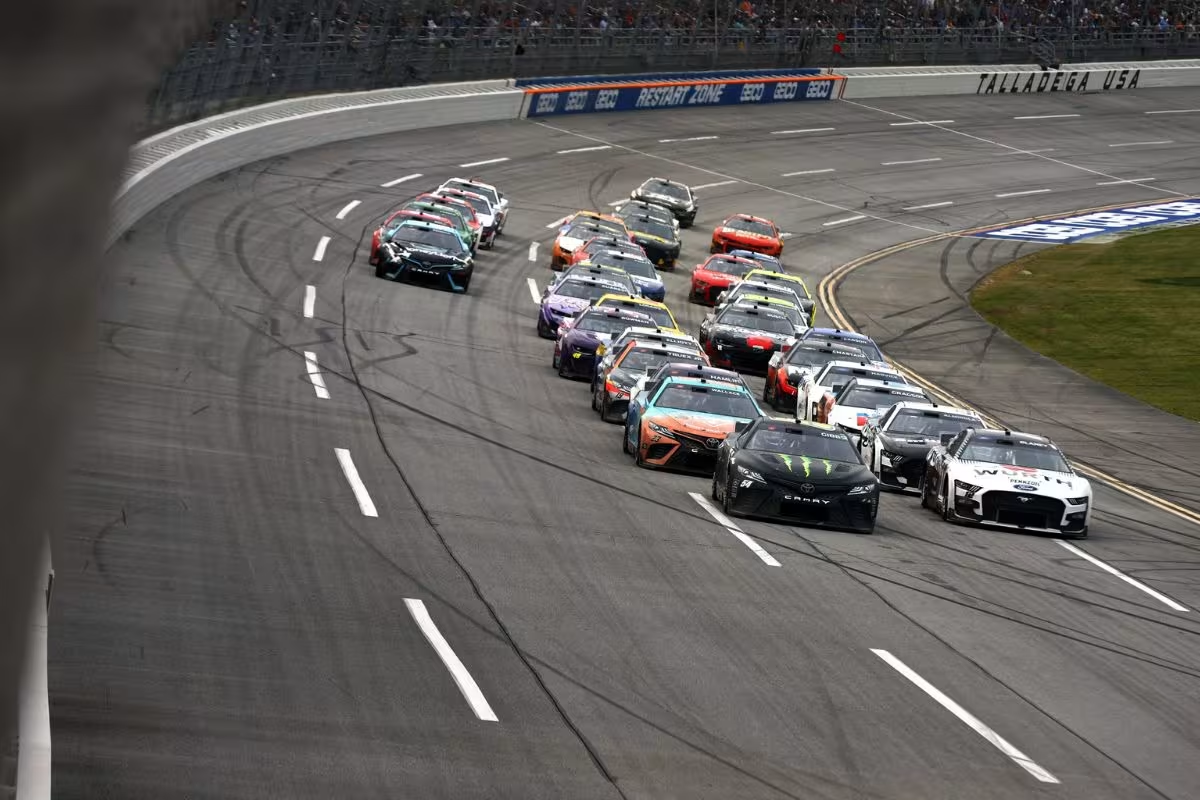Denny Hamlin Questions NASCAR’s Intentions: Denny Hamlin has expressed skepticism regarding NASCAR’s redesign of the Charlotte ROVAL, particularly questioning the safety implications of the alterations. The changes include a repaving and reconfiguration of Turns 6 and 7, resulting in a longer straightaway and a tighter corner. Hamlin warns that these adjustments may lead to more aggressive driving and an increased risk of collisions, especially at the notoriously tight Turn 7. While NASCAR aims to improve competition, Hamlin highlights the importance of prioritizing driver safety.
Key Highlights
- Denny Hamlin expresses skepticism regarding NASCAR’s motives behind the recent changes to the Charlotte ROVAL layout.
- The reconfiguration of Turns 6 and 7 has raised concerns about increased driver aggression and potential collisions.
- Hamlin warns that Turn 7 could become a “parking lot” for accidents, complicating race strategies.
- He emphasizes the need for NASCAR to balance exciting racing with driver safety amid the changes.
- As a competitive driver, Hamlin critiques how these modifications might impact playoff contenders and overall race dynamics.
Denny Hamlin’s Sarcastic Comments on Charlotte ROVAL Changes
Challenging the recent changes at the Charlotte Motor Speedway Road Course, Denny Hamlin‘s sarcastic remarks underscore a growing concern among drivers regarding NASCAR’s evolving track configurations. The repaving and reconfiguration of Turns 6 and 7, transforming the infield into a longer straightaway leading to a tighter corner, have elicited skepticism.
Hamlin’s quip about NASCAR’s intentions to “wipe out the drivers” during the pivotal Round of 12 finale reflects a sentiment that these modifications may disproportionately affect playoff contenders.
The redesigned circuit aims to improve competitive dynamics, yet it raises questions about the balance between excitement and safety. By reshaping the final turns and complicating the braking zones, NASCAR is venturing into territory that could escalate the risk of accidents, particularly during high-stakes races.
Hamlin’s critique is not merely an expression of frustration; it highlights a broader apprehension within the driver community about the implications of such changes on race strategy and driver performance.
As the Bank of America ROVAL 400 approaches, the tension mounts. Playoff drivers will face an unfamiliar and intimidating challenge, possibly designed to heighten drama but at the potential cost of driver confidence and safety.
Hamlin’s Critique of the Reconfiguration
In view of the recent reconfiguration at the Charlotte Motor Speedway Road Course, Denny Hamlin’s critique highlights concerns regarding the potential ramifications for driver safety and race dynamics.
Hamlin has voiced skepticism about NASCAR’s intentions behind the modifications, suggesting that they are engineered to introduce chaos rather than improve the racing experience. His observations focus on the sharpness and tightness of the new corners, particularly the alterations made to Turn 7, which he describes as tighter than the confines of the LA Coliseum.
“The reconfigure was designed to create more chaos. You’re going to have to convince me otherwise of that. They make corners sharper and tighter. It was tighter in Turn 7 anyway, but now they made it to a point. So instead of you driving the normal optimum line to make this corner that is really really tight, tighter than the (LA) Coliseum.” – Hamlin
Hamlin argues that these changes force drivers into aggressive maneuvers that could lead to increased incidents on the track. By mandating a straight-line approach into a corner designed to promote tactical driving, NASCAR risks transforming the racing strategy into a melee where skill is overshadowed by necessity.
He metaphorically characterizes Turn 7 as a potential “parking lot,” indicating that the likelihood of collisions will rise as drivers scramble to navigate the narrow confines of the track.
“They made it a point so they want you to drive straight in the corner I believe, and wipe out whoever’s in front of you and then it’s gonna be a parking lot in Turn 7, and it’s just going to be who can navigate and get through there.” – hamlin
As a seasoned competitor with six previous starts at the circuit, Hamlin’s insights carry weight. His critique suggests that the reconfiguration may not only jeopardize the integrity of the race but also compromise driver safety.
Hamlin’s Position in the Standings
Amid the ongoing discussions about track configurations and their effects on racing dynamics, Denny Hamlin‘s current standing in the NASCAR Cup Series remains a focal point. Currently, he occupies the fourth position in the standings, trailing his teammate Christopher Bell by 27 points. This positioning reflects a season marked by both competitive consistency and the challenges inherent in balancing his dual roles as a driver and co-owner.
Hamlin’s success on the track is highlighted by his impressive record of 54 Cup Series victories, yet the pressure he faces is multifaceted. As a driver for Joe Gibbs Racing (JGR), his performance is essential not just for personal recognition but also for the complete success of the team.
Conversely, as a co-owner of 23XI Racing alongside NBA legend Michael Jordan, he bears responsibility for nurturing emerging talent and ensuring the viability of his expanding team in the highly competitive landscape of NASCAR.
The contrasting of these roles highlights the complexities Hamlin navigates this season. While aiming for personal excellence and a championship run, he must also encourage growth within his organization, maintaining a tactical vision that aligns with both his ambitions and those of his partners.
Balancing Dual Roles and Legal Matters
Maneuvering the complexities of his dual roles as both a driver and co-owner, Denny Hamlin faces unique challenges that require a delicate balance between his commitments to the racetrack and his responsibilities at 23XI Racing. Recently, the antitrust lawsuit filed by 23XI and Front Row Motorsports against NASCAR has intensified examination on Hamlin, compelling him to navigate his obligations with increased caution.
During a media briefing prior to the YellaWood 500 at Talladega Superspeedway, Hamlin articulated the difficulty of maintaining his identity as the driver of the No. 11 Toyota while engaging in discussions that pertain to his ownership role. He emphasized the importance of respecting the boundaries inherent in his positions, stating, “I have to be respectful that while at the racetrack there, I’m the driver of the 11 initially.”
“This weekend, I obviously didn’t say much in the media center, I have to be respectful that while at the racetrack there, I’m the driver of the #11 first and obviously you want to keep your comments pretty short and limited to be respectful to the sponsors I got on my hat and my shirt during that time.” – Hamlin
This sentiment reflects the intricate balancing act Hamlin must perform, as he endeavors to address media inquiries without compromising the interests of his sponsors or the integrity of his team.
Moreover, Hamlin’s acknowledgment of the “tight rope” he walks highlights the inherent tension between his dual responsibilities. As the legal proceedings unfold, with NASCAR’s request for a postponed preliminary injunction hearing granted, Hamlin’s ability to compartmentalize his roles will be vital.
“That’s the tough balance, but when people ask me about ‘what’s the balance?’ One of the toughest is having to walk the tight rope of, ‘well, I’m here as a driver but you’re asking me owner questions. But I want to be respectful and answer your questions.’” – hamlin
News in Brief: Denny Hamlin Questions NASCAR’s Intentions
Denny Hamlin’s comments on the redesign of the Charlotte ROVAL reflect a broader concern regarding NASCAR’s tactical decisions and their implications for competitive balance. The critique not only highlights potential issues with the reconfiguration but also serves as a lens through which to examine the sport’s evolving dynamics. As Hamlin navigates his dual roles within the racing community, the intersection of performance, design, and stakeholder intentions remains a pivotal topic for ongoing discourse in NASCAR.
ALSO READ: Denny Hamlin Calls Out Playoff Victims After Sammy Smith Causes Trouble



